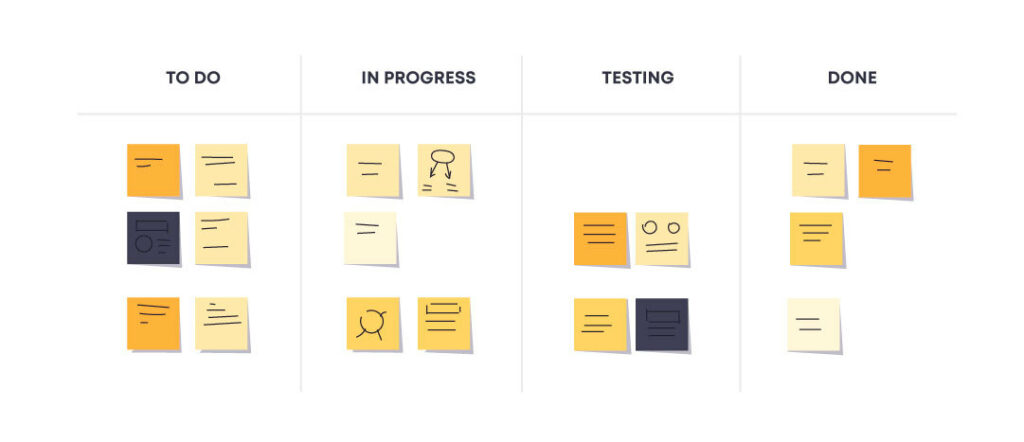In software development, about 32% of projects do not succeed because they either try to do too much, or don’t have clear goals. Fortunately, this can be avoided. Projects simply need solid planning, clear priorities, and good communication with everyone involved.
In this article, we’ll go deeper, exploring how these factors can keep your software projects focused and on track. We’ll focus more on ORIL’s methods to ensure you get practical information.
Let’s dive in.
Understanding Scope Creep
Scope creep is where the project’s requirements keep expanding without matching adjustments in time, resources, or budget. It makes projects larger and more complex than originally planned, leading to delays and cost overruns. As an example, it’s like planning a trip but continually adding more destinations without extending your timeline or budget.
This issue often arises from additional stakeholder demands, changes in market conditions, or unforeseen technical challenges. Although adapting to changes is essential, uncontrolled alterations can cause a project to spiral out of control. The consequences include increased costs, strained team morale, and compromised product quality.
Preventing this requires defining the scope early. Furthermore, you must prioritize project requirements and document any changes to the scope when they occur.
Additionally, maintain regular communication with stakeholders, have a change management plan and be ready to implement a strict change control process. This helps to evaluate the necessity and impact of any changes, and to adjust plans and budgets accordingly.
Strategies for Project Success
1.Leverage Scrum
Scrum is an agile framework that organizes projects into small, manageable phases known as “sprints,” which typically span one to four weeks. This approach is distinguished for its efficiency for several key reasons:
- Focused Delivery
By dividing the project into sprints, teams can concentrate on delivering specific features within a defined timeframe, enhancing productivity and fostering a sense of achievement with the regular completion of tasks. - Enhanced Risk Management
Shorter cycles allow for early detection and resolution of issues, preventing minor problems from escalating and keeping the project on track. - Prioritizes Value Delivery
At the beginning of each sprint, not only does the team select a set of features from the product backlog deemed most vital to the project’s objectives, but they also establish a Sprint Goal. This goal serves as a focused target for what the sprint aims to achieve, guiding the development of key functionalities within the allotted timeframe. This strategic approach ensures that the most critical features are developed first, ensuring alignment with the project’s overarching priorities.
2.Prioritization Techniques
In software project management, choosing what features to focus on is important for efficient use of resources and ensuring the project delivers value. Two key frameworks help in making these decisions — the MoSCoW method and the Value-Effort Matrix.
Priority Sorting Method
This method helps by categorizing features based on necessity, simplifying decision-making on what to include or exclude. It involves:
- Must-haves: Essential features the project needs to succeed.
- Should-haves: Important but not critical, these should be included as soon as possible.
- Could-haves: Nice to have if time and budget allow.
- Won’t-haves: Features excluded from the current project scope.
Value-Effort Matrix
Plots features based on the value they provide against the effort required.
Helps identify:
- High value, low effort: Priority features that are easy to implement.
- High value, high effort: Important but need careful planning.
- Low value, low effort: Optional features, included only if there’s extra capacity.
- Low value, high effort: Least priority, often avoided.
Using the Value-Effort Matrix, teams can focus on features that offer the most benefit for the least effort, ensuring a strategic approach to development.
3.Stakeholder Engagement
Involving stakeholders like clients, end-users, and team members can boost chances of success. They can provide insights that help ensure the project aligns with business goals and addresses user needs.
How It Works
- Stakeholders identify key features reflecting user needs and market trends.
- Their feedback shapes feature prioritization, targeting high-value elements.
- Continuous stakeholder engagement aligns the project with evolving market and business needs.
4.Dynamic Backlog Management

Dynamic backlog management keeps agile projects adaptable by regularly updating the list of tasks. It ensures the project can quickly respond to new information or changes.
Key Practices
- Continuous Review: Update the task list by adding, reprioritizing, or removing tasks as needed.
- Prioritization: Rank tasks to focus on those that offer the most value or are most urgent.
Role of the Product Owner
The product owner serves as a pivotal link between the project team and stakeholders, tasked with managing the product backlog. This role involves not just maintaining the backlog, but also strategically ordering it to maximize the product’s value. This ensures that every aspect of the backlog aligns with both the project’s objectives and the expectations of stakeholders, guiding the team towards delivering the highest value features and functionalities first.
Team Collaboration
The whole team works together in planning and review sessions to adjust the backlog, ensuring everyone is aligned and can respond to changes efficiently.
Conclusion
For software projects to succeed, careful planning coupled with the flexibility to adapt is crucial. Implementing sprints, prioritizing tasks, and maintaining an updated backlog are foundational steps. Regular stakeholder involvement ensures ongoing alignment with project goals. A pivotal aspect of successful project management lies in embracing the principles of Transparency, Inspection, and Adaptation. Being transparent allows teams to inspect processes and outcomes effectively, which in turn facilitates timely adaptations to meet emerging challenges and opportunities. This approach helps avoid delays and keeps the project on track, ensuring a balance between rigorous planning and the necessary agility to respond to change.






